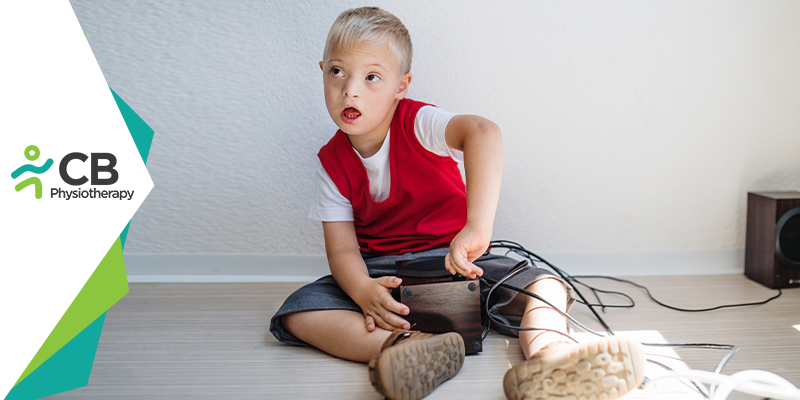Since the year 2012, March 21 has been officially observed by the United Nations as a global awareness day for Down syndrome. Down Syndrome (DS) is a genetic disorder that causes a global delay in development, including motor function, language, and cognition. It is a medical condition that makes the immune system weak and patients have about a 12-fold increased risk of infectious diseases. For COVID-19 also, Down syndrome patients are considered to be at higher risk. An early intervention presents the most benefits, as neural plasticity is at its peak in the first months of life. One of the interventions used is Physiotherapy. Physiotherapy is offered from birth to stimulate the acquisition of motor skills. It helps to strengthen the muscles, enabling children with Down syndrome to keep their bodies in proper alignment and therefore preventing future health problems.
The Physiotherapist uses the following techniques for giving treatment to the Down syndrome patient:
1: Relaxation:Relaxation decreases muscular tension and improves body control and coordinated movements. The treatment may include breathing control, which focuses on relaxing your upper body and breathing from your tummy. This can be used in conjunction with deep breathing which helps the muscles relax when pain is restricting breathing. Progressive muscle relaxation is another technique, which involves slowly tensing and then releasing each muscle group individually, starting with the muscles in the toes and finishing with those in the head.
2: Improve Co-ordination:
Coordination is the ability to execute smooth, accurate, controlled motor responses (optimal interaction of muscle function). It is the ability to select the right muscle at the right time with proper intensity to achieve proper action (which involves the coordinated action of various segments, as in cases of hand-eye coordination) and general coordination (which involves the entire body). The physiotherapist uses activities like hitting a balloon, rolling balls, popping bubbles, throwing into a container, throwing and catching, juggling, egg and spoon race, etc, to improve the coordination of the patient.
3: Improve Balance:
It is well known that persons with DS are often considered floppy, clumsy, uncoordinated, and have awkward movement patterns due to balance issues. These balance challenges often follow the child into the teen years and sometimes into adulthood. The physiotherapist may use equipment such as an exercise ball or bobath ball, to improve your child's ability to hold the head erect or to maintain a sitting position. Other skills such as jumping, skipping, and dribbling a ball may be incorporated into a fun physical therapy regimen. The development of balance happens progressively, starting from various postures (control of the head from prone positions, of the trunk in the seated position, etc.), and moving on to the more refined postures found in dynamic and in in-motion balance.
4: Improve Motor Function:
The Down syndrome patient has hypotonic or low muscle tone. The physiotherapist teaches the patient to move the body in appropriate ways and improves muscle tone. The therapist works on the muscles and movements which help to reach some of the milestones and prevents the child from developing problems of bad posture. Physiotherapy can play a major role in the management of children with Down syndrome, through exercises, manual therapy, and education, physiotherapists can empower people to take charge of their health and participate in their treatment.
5: Improving Strength:
If the muscles are not strengthened the child can end up having a postural, gait, and a greater risk of joint problems later in life from using their muscles incorrectly. The physiotherapist can teach exercises to improve and increase muscle strength, this can include crawling, climbing, wheelbarrowing, pushing up through their arms in a tummy line, bridging, crab walking, roll-ups, planks, games, and fun tasks that are adjusted as the child grows. Also identifies new fitness activities to reduce the risk of obesity and improve and maintain heart health.
6: Improve Developmental Skills:
Physical therapists can help your child to learn motor skills such as crawling, sitting to standing, standing to sitting, pulling, and walking. They can also give training for positioning, movement, feeding, and play, and suggest changes at home to encourage movement and communication development.
The importance of early intervention should be emphasized. Physiotherapy treatment aims to assist people to live as independently as possible.

